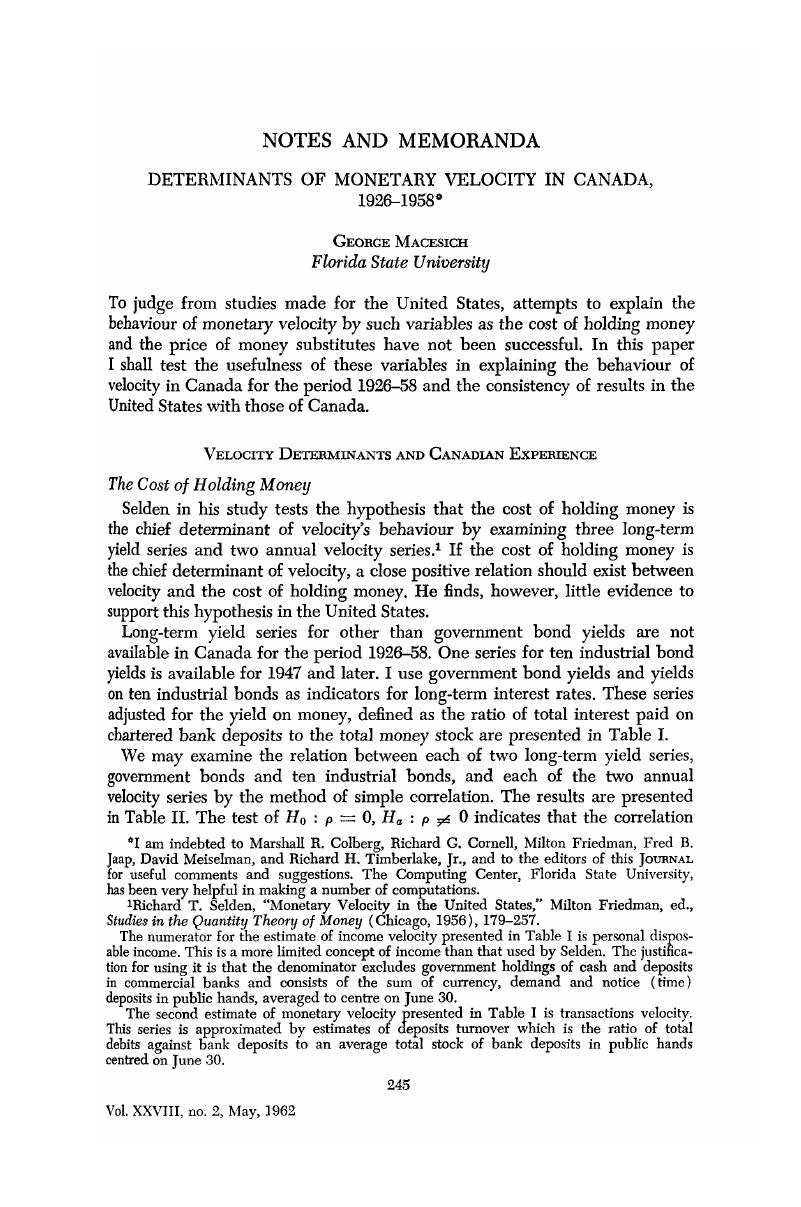No CrossRef data available.
Article contents
Determinants of Monetary Velocity in Canada, 1926–1958*
Published online by Cambridge University Press: 07 November 2014
Abstract

- Type
- Notes and Memoranda
- Information
- Canadian Journal of Economics and Political Science/Revue canadienne de economiques et science politique , Volume 28 , Issue 2 , May 1962 , pp. 245 - 254
- Copyright
- Copyright © Canadian Political Science Association 1962
Footnotes
I am indebted to Marshall R. Colberg, Richard G. Cornell, Milton Friedman, Fred B. Jaap, David Meiselman, and Richard H. Timberlake, Jr., and to the editors of this Journal for useful comments and suggestions. The Computing Center, Florida State University, has been very helpful in making a number of computations.
References
1 Seiden, Richard T., “Monetary Velocity in the United States,” Friedman, Milton, ed., Studies in the Quantity Theory of Money (Chicago, 1956), 179–257.Google Scholar
The numerator for the estimate of income velocity presented in Table I is personal disposable income. This is a more limited concept of income than that used by Seiden. The justification for using it is that the denominator excludes government holdings of cash and deposits in commercial banks and consists of the sum of currency, demand and notice (time) deposits in public hands, averaged to centre on June 30.
The second estimate of monetary velocity presented in Table I is transactions velocity. This series is approximated by estimates of deposits turnover which is the ratio of total debits against bank deposits to an average total stock of bank deposits in public hands centred on June 30.
2 Ezekiel, Mordecai and Fox, Karl A., Methods of Correlation and Regression Analysis (New York, 1959), 337–43.Google Scholar
3 Ibid., 217.
4 Ibid.




